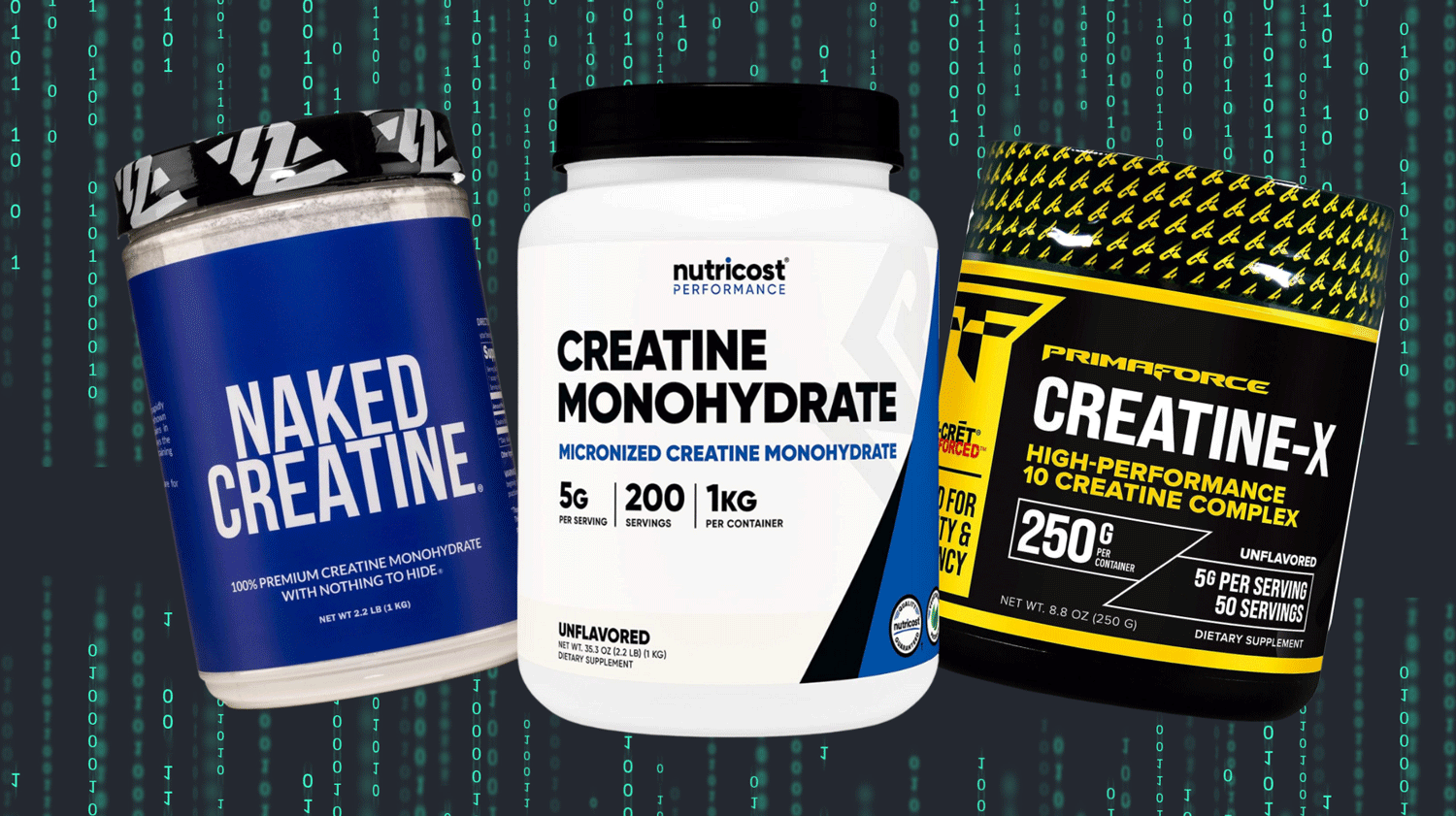How Much Creatine Should I Take
(Hint: It’s Less About Quantity and More About Consistency)


While creatine supplementation is predominantly safe, it’s important to understand that more doesn’t always lead to better health outcomes. Overindulgence can usher in undesirable gastrointestinal discomforts.
Creatine is a top choice for those looking to boost muscle growth and strength. But its benefits don’t stop there; it can also help with aging and brain health.
However, it’s important to remember that taking more doesn’t always mean getting better results. In this guide, we’ll cover the main benefits of creatine, any side effects, and how much you should take.


WHAT IS OUR #1 CREATINE SUPPLEMENT?
Check Our Ranking of the 12 Best Creatine Supplements for 2023
What Is Creatine?
Creatine is a natural compound that your body produces from amino acids. These amino acids are primarily found in the kidneys, liver, and pancreas. On average, your body produces about 1 to 2 grams of creatine every day, which plays a crucial role in helping your muscles function effectively.
In addition to what your body produces, you can also get creatine from your diet. Foods rich in creatine include beef, chicken, and fish, each providing around 1 to 2 grams of creatine. It’s worth noting that vegetarians might have slightly lower levels of creatine in their muscles since they don’t consume these animal-based foods.
For those looking to boost their creatine levels, supplements are a viable option. Among the various types of creatine supplements available, creatine monohydrate stands out. It’s not only well-researched but also known for its effectiveness and affordability.
Amplifying Athletic Achievements
At the heart of creatine’s appeal to athletes is its role in energy production. Our muscles rely on a molecule called ATP for energy, especially during short bursts of intense activity. Creatine plays a pivotal role in replenishing ATP, ensuring that muscles have the fuel they need to perform optimally.
Numerous scientific investigations have validated creatine’s efficacy in this domain. Athletes across disciplines have reported significant improvements, with some studies indicating up to a 15% boost in muscle power and strength, making it a staple in many training regimens.


Aging with Vigor and Vitality
As we age, maintaining muscle mass and bone density becomes crucial. Creatine has shown promise in this arena. Research indicates that older individuals, when supplementing with creatine, can experience enhanced muscle growth and reduced bone degradation.
For instance, a study involving older men highlighted the benefits of combining creatine with protein intake.
The results? Improved muscle growth and a notable reduction in bone loss. Another extensive study involving 405 older participants found that the combination of creatine and resistance training outperformed just training alone.
The message is clear: Creatine can be a valuable ally in the quest for healthy aging.
Brain Health and Creatine
The benefits of creatine aren’t limited to muscles. The brain, a vital organ demanding a significant amount of energy, can also benefit from creatine supplementation. Preliminary research suggests that creatine can elevate brain creatine levels, which in turn can have a positive impact on cognitive functions.
For instance, a study focusing on complex mathematical tasks found that participants who consumed creatine showcased better performance and reduced mental fatigue. This positions creatine as not just a muscle booster, but also a potential brain enhancer.
Effective Creatine Consumption
While the benefits of creatine are evident, the method of consumption plays a crucial role in maximizing its effects. There are two primary strategies:
Loading Phase: This involves taking a higher dose initially (around 20-25 grams) spread over 4-5 doses for 5-7 days. This method aims to quickly saturate the muscles with creatine, leading to faster results. After this phase, a maintenance dose of 3-5 grams daily is recommended.
Steady Dosing: For those who prefer a more gradual approach, taking a consistent dose of 3-5 grams daily can achieve similar muscle saturation over a longer period, approximately 28 days. This method offers simplicity and is equally effective.
Safety Profile of Creatine
The question of safety is paramount when considering any supplement. Fortunately, creatine boasts a strong safety record. Numerous studies, ranging from short-term to spanning several years, have consistently shown that creatine, when consumed in recommended doses, is safe.
While there have been concerns about its impact on kidney health, recent studies, including those involving individuals with diabetes, have debunked these fears. However, as with any supplement, it’s essential to consult with healthcare professionals, especially for those with pre-existing conditions or on medication.
Potential Side Effects of Overconsumption
While creatine is generally safe, it’s essential to be aware of potential side effects, especially when consumed in excessive amounts. Some individuals might experience weight gain due to increased water retention in muscles.
Others might face digestive issues if they consume large amounts in a single dose. The key is moderation and adhering to recommended dosages to enjoy the benefits without the drawbacks.


In Conclusion
Creatine, with its myriad of benefits, has solidified its position as a go-to supplement for both athletes and health-conscious individuals. Its ability to enhance athletic performance, support healthy aging, and potentially boost cognitive functions makes it a versatile and valuable addition to one’s health regimen.
As with any supplement, understanding its proper usage and potential effects is crucial. With the right approach, creatine can be a powerful tool in one’s journey towards optimal health and performance.
Your Creatine Questions… Answered.
Check out these related articles to learn more about creatine:

